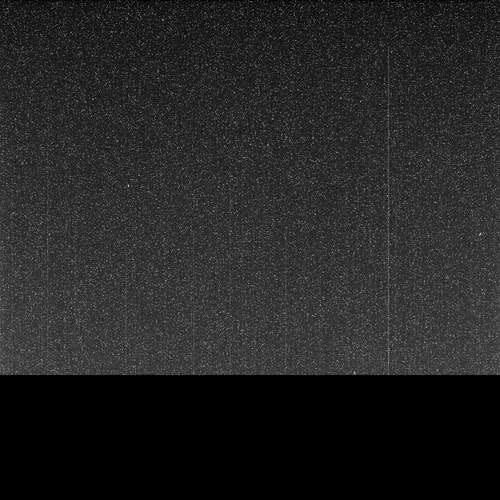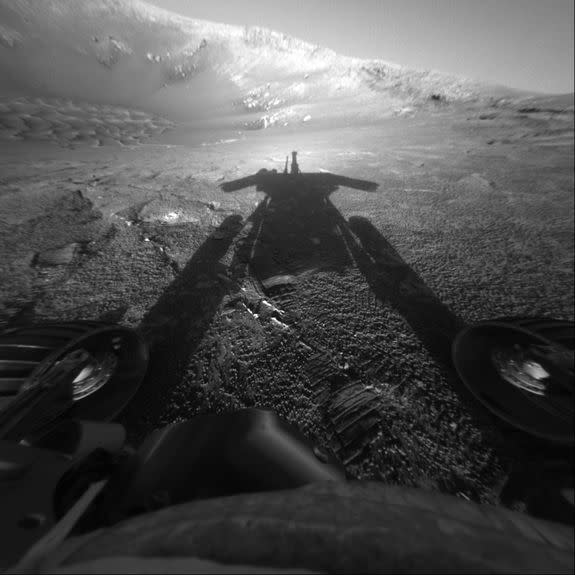Opportunity rover's last picture is as grim as it is dark

A mighty dust storm swirled around the Opportunity rover on June 10, 2018, forcing the robot to shut itself off and conserve power. The dust blocked out nearly all the sunlight, turning day to night.
Opportunity would never awake. On Wednesday, NASA announced that they would no longer attempt to revive the 15-year-old machine, formally ending the legendary extraterrestrial mission.
But on that dark June day, just before Opportunity went silent, the rover took one final picture:

Image: nasa
The image captured a Martian world shrouded in darkness by the dust storm.
"This was the last image we ever took," Bill Nelson, chief of the Opportunity mission's engineering team at NASA's Jet Propulsion Laboratory, said in an interview just after NASA declared the mission over.
"We are looking at an incredibly small amount of sunlight — .002 percent of the normal sunlight that we would expect to see," said Nelson. "If you were there, it would be late twilight. Your human eye would still be able to make out some features, but it would be very dark."
But in this final image, no Martian features are visible.
In the picture, the white static amid the black is just image noise the camera picked up in the darkened setting ("It's kind of like the image you get on your phone in a very dark environment," said Nelson). The thick black bar at the bottom of the picture is data that never arrived back to Earth — as if Opportunity's message was cut off mid-sentence.
SEE ALSO: A 12-mile, underground lake may have been found on Mars. What could live there?
If the rover had not been caught in such a dust storm, it would have taken a picture down a channel, about 20-feet across, as Opportunity peered down a valley, said Nelson.
So-called "Perseverance Valley" became Opportunity's final resting spot.
Six days earlier, Opportunity captured the following picture of the wide, sloping environment.

Image: nasa
Over the course of Opportunity's life, the rover shot well over 200,000 images and sent them back to Earth.
One of Nelson's favorites came just 180 Martian days, or sols, into Opportunity's exploration of the red planet. With the sun shining behind the rover, Opportunity captured an image of its long shadow.

Image: nasa
"It's very evocative of the status of that rover," said Nelson. "Here we are, with one tiny rover on this foreign, alien planet all by itself."
Now, the 400-pound robot will spend millennia getting shrouded in red dust, and NASA engineers like Nelson will move on to other extraterrestrial projects, as will his entire NASA exploration team.
"It's bittersweet," said Nelson, noting how proud he is to have worked with engineers and scientists that directed Opportunity for some 15 years. "Now, our teams are going to sort of scatter to the winds."
WATCH: Ever wonder how the universe might end?


